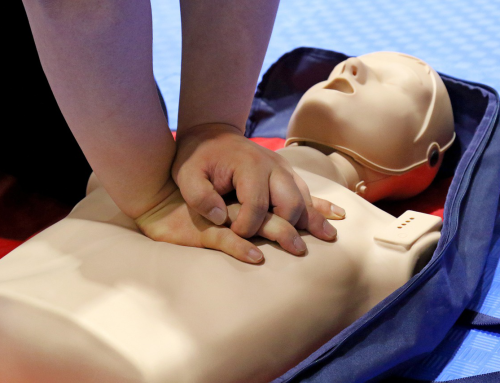The modern workplace demands a lot from our bodies. Whether we sit hunched over computers all day, perform repetitive tasks on assembly lines, or lift heavy objects in construction, our daily work routines can take a toll on our musculoskeletal system – the complex network of muscles, tendons, ligaments, bones, and joints. This can lead to a variety of painful and debilitating conditions known as musculoskeletal disorders (MSDs).
The good news is that workplace ergonomics can significantly reduce the risk of work-related MSDs. Ergonomics is the science of designing the workplace to fit the worker, not the other way around. By implementing ergonomic principles, workplaces can be transformed into safer and more comfortable environments that promote worker well-being and productivity.
Types of Musculoskeletal Disorders Common to the Modern Workplace
Musculoskeletal disorders are a broad category of injuries and conditions affecting the muscles, tendons, ligaments, nerves, bones, and joints. These disorders can cause pain, stiffness, weakness, and even loss of function. Some of the most common MSDs seen in the modern workplace include:
- Back pain:This is a widespread problem, affecting millions of workers across various industries. It can arise from poor posture, prolonged sitting, awkward bending, and heavy lifting. Back pain can range from mild discomfort to debilitating pain that significantly impacts a worker’s ability to perform their job.
- Carpal tunnel syndrome:This condition affects the hand and wrist, causing pain, numbness, tingling, and weakness. It is commonly associated with repetitive hand movements, such as typing, assembly line work, or using vibrating tools.
- Neck pain:Long hours spent hunched over a computer screen can lead to neck pain and stiffness. Poor posture, awkward head positions while using phones, and repetitive movements can all contribute to this issue.
- Tendinitis:This is inflammation of a tendon, the tissue that connects muscle to bone. It can occur in various areas of the body due to repetitive movements, overuse, or awkward postures.
- Bursitis:Bursae are fluid-filled sacs that cushion joints. Bursitis is inflammation of these sacs, often caused by repetitive pressure or friction on a joint. This condition can be painful and limit joint mobility.
These are just a few examples, and MSDs can affect any part of the body subjected to repetitive motions, awkward postures, or excessive force. The risk factors for developing MSDs vary depending on the specific job and work environment. However, some common factors include:
- Repetitive tasks:Jobs that involve repetitive motions, such as typing, operating machinery, or assembly line work, can put a strain on specific muscle groups and joints, leading to MSDs.
- Uncomfortablepostures: Holding awkward postures for extended periods, such as reaching overhead, bending at the waist, or twisting the spine, can put undue stress on muscles and joints.
- Heavy lifting:Lifting heavy objects incorrectly or frequently can strain muscles and lead to back injuries.
- Vibration:Using vibrating tools can damage nerves and blood vessels in the hands and arms, increasing the risk of carpal tunnel syndrome and other nerve problems.
- Improper workstation setup:Poorly designed workstations that don’t provide adequate back support, monitor height adjustment, or proper keyboard and mouse placement can contribute to MSDs.
- Stress:High levels of stress can worsen MSD symptoms and make it harder for the body to heal.
8 Tried and Tested Techniques For Mitigating Musculoskeletal Injuries
Understanding the types of MSDs prevalent in the workplace is crucial for implementing effective ergonomic interventions to prevent injury and promote musculoskeletal health among employees.
1. Promote a Culture of Ergonomics
The first step is to create a workplace culture that prioritizes ergonomics. This involves raising awareness about the risks of MSDs and the benefits of ergonomics. Management should actively encourage employees to report any discomfort or pain they experience while performing their job. This open communication allows for early intervention and potential ergonomic adjustments to prevent further injury. Additionally, involving employees in the process of identifying ergonomic hazards and implementing solutions can foster a sense of ownership and encourage compliance with ergonomic protocols.
2. Invest in Workplace Assessments
A qualified ergonomist can conduct comprehensive workplace assessments to identify potential ergonomic hazards. These assessments typically involve observing work tasks, analyzing workstation setups, and interviewing employees about any discomfort they experience. The ergonomist will then provide specific recommendations for improvements, such as modifying workstations, implementing new equipment, or adjusting work practices. Regularly scheduled assessments are crucial to ensure a continued focus on ergonomics as work processes and tasks evolve.
3. Design the Perfect Workstation
Imagine a workstation that molds to your body, not the other way around. Ergonomic workstations achieve this by incorporating adjustability. Adjustable chairs with lumbar support and tilt mechanisms allow for proper back posture and leg positioning. Desks that adjust in height empower workers to switch between sitting and standing throughout the day, promoting circulation and reducing back pain risks. Monitor placement is crucial too. Ideally, monitors should sit directly at eye level to prevent neck strain, with an arm’s length distance and a slight backward tilt for optimal viewing comfort. Adjustable monitor stands or arms further personalize this experience.
4. Train Employees on Proper Lifting Techniques
Back injuries and heavy lifting often go hand-in-hand. However, proper lifting techniques can significantly reduce this risk. The key lies in planning the lift. Assess the weight and enlist a colleague or use proper equipment if necessary. Positioning is paramount. Stand close to the object with feet shoulder-width apart for stability. Squat with your legs, keeping your back straight and core engaged – never bend at the waist! Lift with your legs, not your back, and keep the object close to your body throughout the movement. Avoid twisting your spine; instead, turn your entire body with your feet together if you need to change direction. Finally, lower the object with the same controlled movements in reverse.
5. Encourage Regular Movements and Breaks
Our bodies weren’t designed for extended sitting, which can lead to back pain, neck stiffness, and other MSDs. The solution? Encouraging regular movement and breaks throughout the day. Short walking breaks every hour get the blood flowing and reduce muscle stiffness. Simple stretches for the neck, shoulders, back, and legs can make a world of difference in preventing discomfort. For some, standing workstations or treadmill desks offer a great way to stay active while working. The key takeaway: prioritize regular movement breaks to combat the negative health effects of prolonged sitting.
6. Use Appropriate Tools and Equipment
Adjustable screwdrivers and wrenches come in various sizes and with handles that adjust to different hand sizes and grip strengths. This allows for a comfortable and secure grip, reducing strain on wrists and hands. Similarly, adjustable shears and scissors accommodate different hand sizes and prevent awkward postures. Paddded handles on tools further enhance comfort and reduce hand fatigue. By providing a variety of adjustable tools, employers can promote a more comfortable and injury-free work environment.
7. Conduct Workplace Assessments
Knowledge is power, especially when it comes to preventing MSDs. Investing in workplace assessments conducted by qualified ergonomists can identify potential ergonomic hazards before they lead to injuries. These assessments involve observing work tasks, analyzing workstation setups, and interviewing employees about any discomfort they experience. Based on their findings, the ergonomist will recommend specific improvements, such as modifying workstations, implementing new equipment, or adjusting work practices. Regularly scheduled assessments ensure a continued focus on ergonomics as work processes and tasks evolve.
8. Prioritize Early Detection
Preventing MSDs is crucial, but early detection and intervention are equally important. Educate employees about the common signs and symptoms of MSDs, such as pain, stiffness, numbness, and weakness. Encourage open communication and empower employees to report any discomfort they experience promptly. Responding quickly to these initial warning signs allows for early intervention and treatment, which can significantly improve recovery time and prevent the development of more serious musculoskeletal disorders. By fostering a culture of awareness and open communication, workplaces can encourage early reporting and promote a proactive approach to managing MSDs.
Join Metro Safety’s First Aid Courses for Workplace Ergonomics Training!
While musculoskeletal injuries can be challenging to navigate, you can create a healthy and safety-oriented culture at your workplace by prioritizing trainings that discuss and illustrate workplace ergonomic principles and practices in action. This is where Metro Safety’s expertise as British Columbia’s leading training center comes in, helping workers across a variety of industries implement best practices.
Our training courses include emergency and occupational first aid courses (Levels 1 through 3), fall protection and fall arrest, forklift operation, and confined space safety to name a few. We also offer additional resources on our website to help support your learnings on workplace ergonomics.
Explore our website to find the course you’re looking for! For queries, visit our contact page and we’ll reach out soon.








